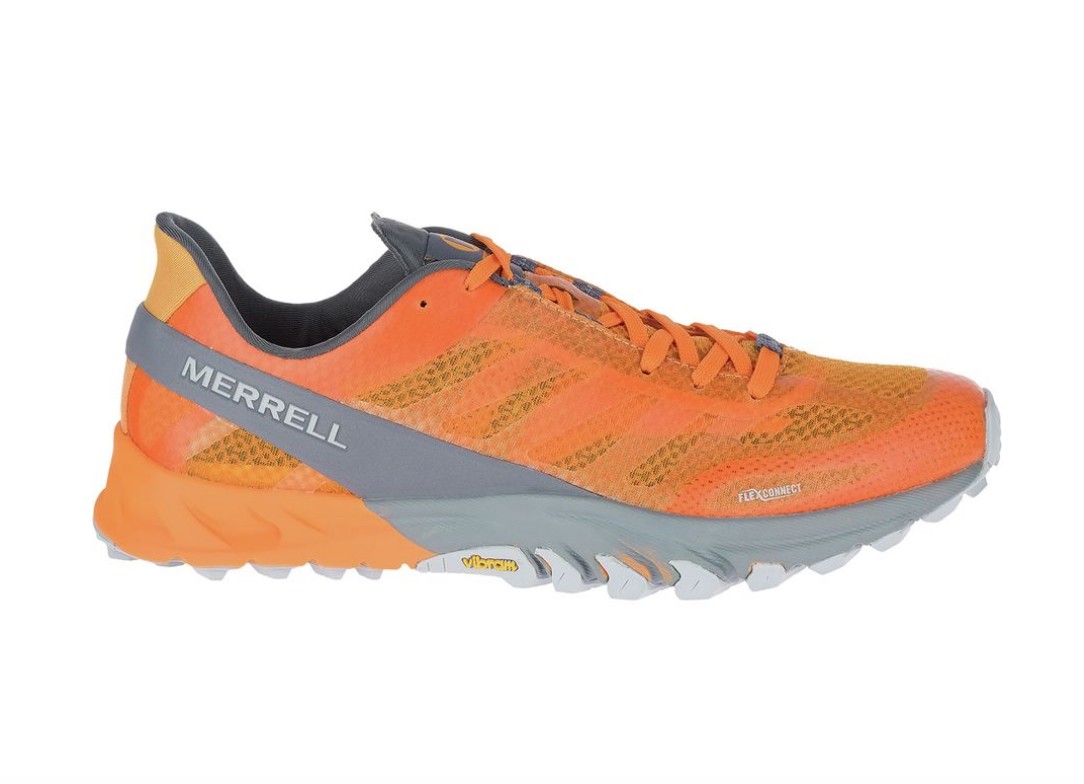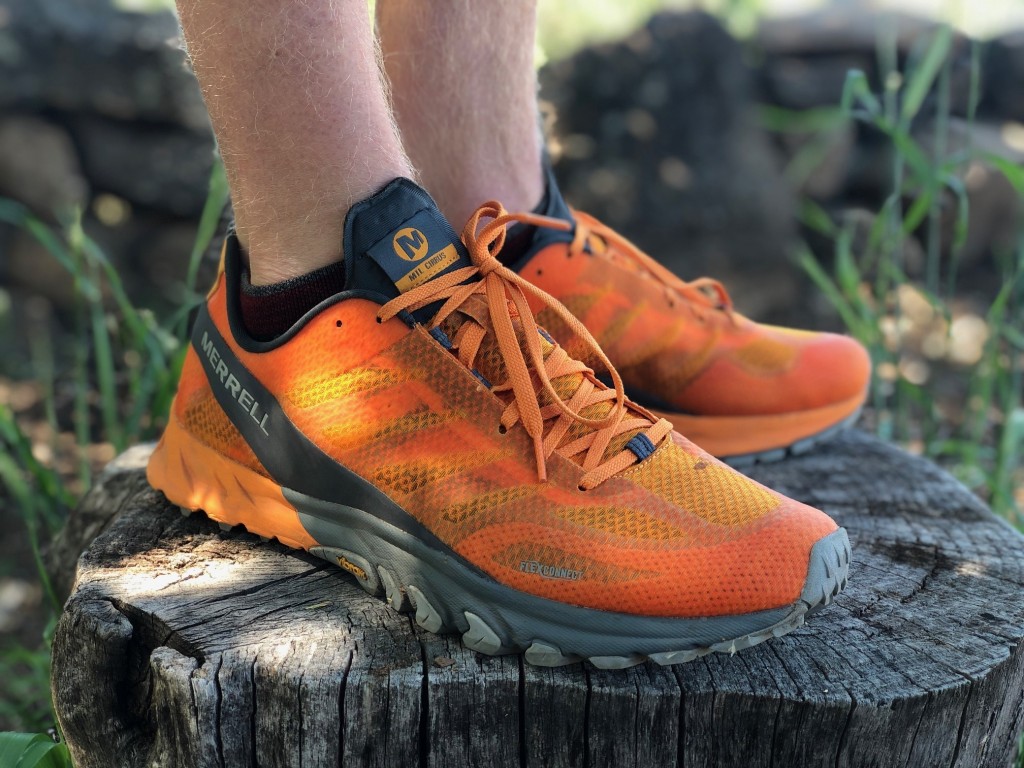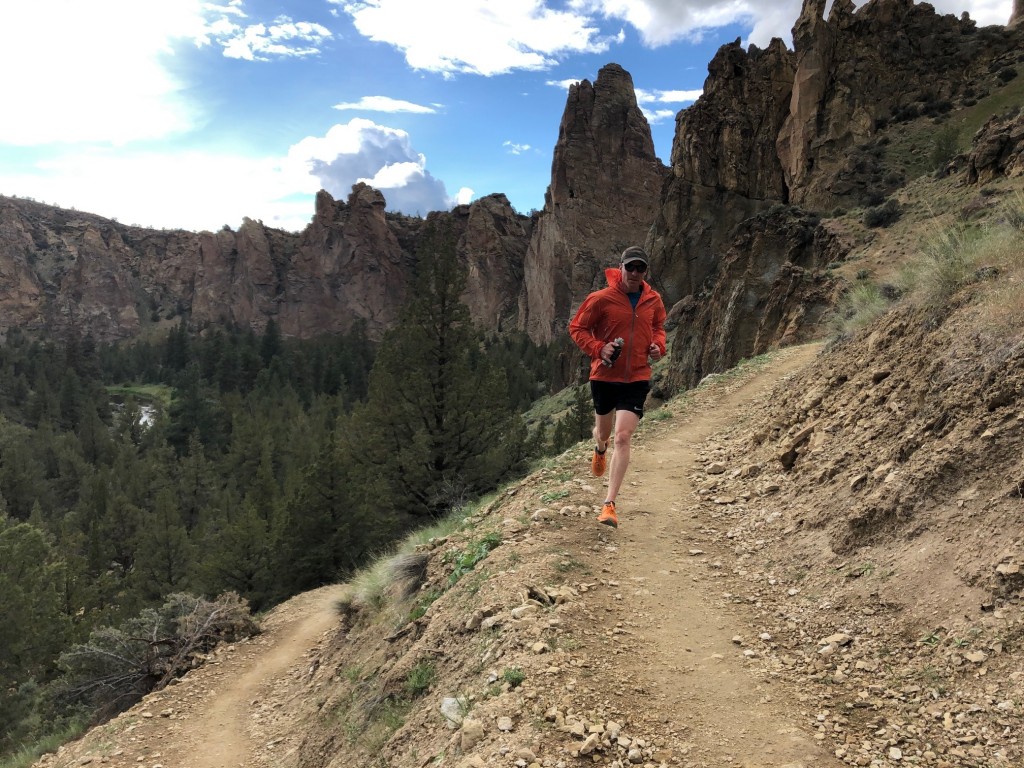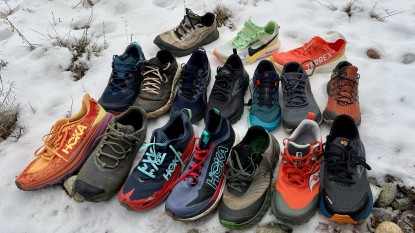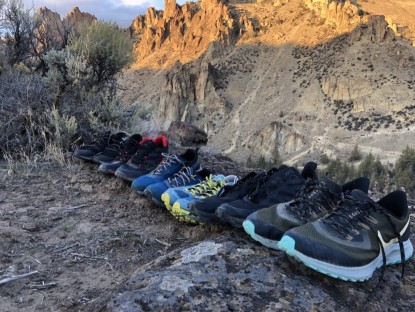Merrell MTL Cirrus Review
Our Verdict
Our Analysis and Test Results
We could tell that something was off with this shoe after the very first step. On both of our feet, on the inside of the arch, we immediately noticed uncomfortable rubbing as we walked in a way that no shoe should. A closer inspection reveals that the mesh upper appears to be made of plastic fibers that lack the suppleness and softness of the fabric uppers found in most shoes. In the arches of both shoes, this mesh is creased and bent and is then overlaid with TPU films that seem to lock these irregularities into place.
When taking a simple step on flat ground, the “fabric” in this area folds over itself, rubbing noticeably against the inside of the foot, and this problem is exacerbated when going up or especially downhill. Combine this poor design with a loose heel cup that has virtually no padding and allows for slippage and hot spot buildup, and you get one poor, uncomfortable fit, that most certainly does not lock our feet securely in place. We searched the internet for confirmation of our negative experience but found only a few reviews total, which simply regurgitated the marketing speak (a solid reason why you should only trust independent review sites like OutdoorGearLab when combing the internet). The final insult is the $160 price tag, which is the second-highest among shoes we tested but is preposterous for shoe that either has a production flaw or wasn't fully quality tested before production began. Spend your money elsewhere.
Performance Comparison
Foot Protection
The compression-molded EVA foam found in the midsole of this shoe is firm, with little springy bounce or absorption often found in EVA foams these days. It is augmented by a rock plate that is designed to still allow for flexibility in the midsole and accomplishes this fairly well. This shoe is reasonably protective underfoot, and yet still allows for a lot of sensation, especially when stepping on the pointy ends of rocks, to sneak through and affect the foot. The mesh upper is heavily reinforced by TPU film overlays that should enhance its durability, but there is little in the way of a toe bumper beyond the curled up outsole on the front. This shoe felt about as protective as the Nike Terra Kiger 5, but nowhere near as protective as the Scarpa Spin Ultra.
Traction
Despite using a Vibram Megagrip compound in the outsole, a rubber which we usually find to be very sticky and highly durable, we found this sole to be one of the hardest and least sticky that we tested. On dry talus, it positively struggled to grip, in stark contrast to the Megagrip outsole found on the Hoka Speedgoat 3. The lug pattern is multi-directional but surprisingly short, less than 3mm for most lugs, and many of which seem to be spaced too closely together. Overall, this shoe was among the least grippy we tested on almost all types of terrain.
Stability
This shoe feels low to the ground, despite the quoted 30mm of under the heel stack, which we can't see at all in comparison to the supposedly 31mm of under the heel stack in the Hoka Challenger ATR 5. The 5mm drop is moderate and doesn't contribute to a lack of stability. What does though is the previously mentioned terrible fit. Our feet were sliding all over in this shoe, both side-to-side and forward when going downhill. Worse, our heels easily slid upward when going uphill, creating hot spots (which we never allowed to become blisters). Having the shoe grip your foot securely and comfortably is a critical component of stability, and this shoe drastically misses the mark.
Comfort
Due to the issues with the folds and creases in the upper material already described above, not to mention the very loose heel and overall fit, with little to no comfortable padding, we found this to be a very uncomfortable shoe. Comfort is king when it comes to running shoes, so we'd recommend looking elsewhere.
Weight
On our independent scale, these shoes weighed exactly 22 ounces for men's size 11 US. While this isn't by any means the heaviest shoe we tested, it is not nearly the lightest either and is merely average. All shoes these days are described as lightweight, but the Hoka Evo Jawz (16.0 ounces per pair), or the Altra Superior 4 (18.8 ounces per pair), genuinely back up these claims.
Sensitivity
Despite the hard EVA foam and the rock plate in the midsole, we found this to be a relatively sensitive shoe. This is a good attribute for running uphill, as one would do in a Vertical K race, which these shoes were designed for.
Best Applications
These shoes are designed for short and steep mountain races. Due to the lack of comfort and relative lack of traction when compared to so many other trail running shoes these days, it would be hard to recommend them for this purpose.
Value
These shoes retail at $160, which is a bit extreme, regardless of performance. If they were one of the best shoes you can buy, then maybe the money would be worth it, but in this case, we'd recommend you spend your money elsewhere.
Conclusion
We had high hopes for the new Merrell MTL Cirrus based upon its design collaboration with Joe Gray, one of the best trail runners in the USA, and its stated intent of being able to tackle the most technical mountain terrain. However, it disappoints in a major way and is not a shoe we would recommend purchasing.


